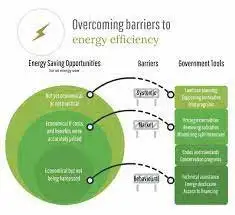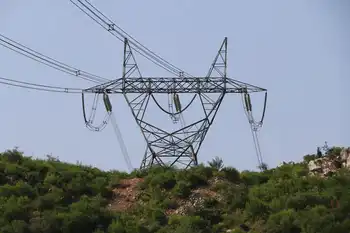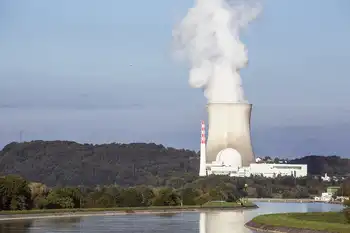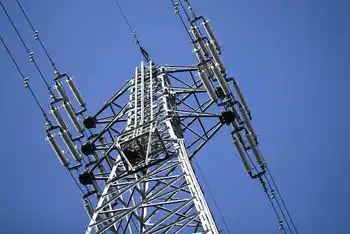Utilities plan for possible winter gas shortages
By Petroleum News
Protective Relay Training - Basic
Our customized live online or in‑person group training can be delivered to your staff at your location.

- Live Online
- 12 hours Instructor-led
- Group Training Available
Southcentral Alaska utility gas deliverability, the maximum rate at which gas can be flowed to gas users from the aging Cook Inlet gas fields, has been steadily declining over the years and in a cold snap in January 2009 gas demand came close to the deliverability limit. And with the deliverability having declined further since then, a gas shortfall seems all but inevitable if the severely cold weather of early 2009 recurs, perhaps in the coming December or January.
The entire Southcentral Alaska region is heavily dependent on gas-fired power stations. But if gas deliverability falls below the gas demand level, gas supplies to power stations would be reduced in preference to dropping the utility gas pressure to a point where consumers would lose their gas supplies, supplies that are essential to the heating of homes and businesses.
The consequence would likely be rolling electricity blackouts across the region.
At an August 26 meeting of the Regulatory Commission of Alaska, Anchorage electric utility Chugach Electric Association and the other Alaska Railbelt utilities described their draft gas shortage contingency plan. The plan envisages that if severe cold weather is in the offing, the utilities will initiate a series of steps to reduce their gas needs, while issuing consumer alerts to request voluntary reductions in gas demand. The concept is to try to keep electricity flowing by engineering a "soft landing" for the gas supply system, Bradley Evans, Chugach CEO, told the commissioners.
If a gas shortfall appears imminent, the power utilities would initiate the hoped-for soft landing by taking measures which they think could reduce their gas demand by up to 40 percent, Evans said.
Those measures could include maximizing output from hydroelectric power plants such as Bradley Lake on the Kenai Peninsula; initiating the emergency purchase of power from the Fairbanks utility, Golden Valley Electric Association, using the Alaska Railbelt electrical transmission intertie; moving the power load between different power generation units; asking the City of Seward to switch over to its backup diesel power generation plant; purchasing additional emergency gas supplies from gas producers; and perhaps reducing gas consumption through emergency adjustments to the "spinning reserves" that are required to be kept in hand at the power plants.
In parallel with steps taken by the utilities, alerts would be sent to electricity and gas consumers, to seek voluntary reductions in energy demand. There will likely be three alert levels: green, yellow and red, explained Phil Steyer, Chugach's director of government relations.
Green would signify normal operations, albeit with requests to use energy wisely. Yellow would flag caution, requesting the initial lowering of thermostats and minimizing or ceasing the use of some types of electrical or gas appliances. Red would indicate an emergency situation and would likely be accompanied by requests for further lowering of thermostats and actions such as turning off water heating. And the utilities plan to do some advance preparation with government organizations and other public entities, to determine how energy demand might be reduced in public buildings during cold, dark winter evenings, if needed.
"That would be a preplanned response we envisage from those (public) organizations that have a lot of square footage," Steyer said.
The utilities anticipate a 15 percent reduction in gas demand from voluntary actions in response to emergency alerts. Added to the 40 percent demand reduction potentially achieved by the power utilities, the total demand reduction would leave the utilities with some additional interruption wiggle room above the 25 percent of gas usage required to keep essential systems such as the power transmission network in operation.
"It's very similar to Enstar (the main Southcentral gas utility) wanting to keep the pipeline system up," Evans said. "If the transmission system were to be taken down then we don't have the emergency purchases coming from Golden Valley. We don't have access to all of the hydro."
The possibility that Anchorage power utility Municipal Light and Power could switch over to the backup diesel generation capability that it maintains might provide a little additional flexibility in determining minimum gas supply levels, he added.
Municipal Light and Power General Manager James Posey told the commissioners that Municipal Light and Power tries to keep on hand sufficient diesel fuel for three to four days of use continued use of diesel generation — thereafter would require additional fuel to be trucked in at the rate of about one truck every two hours, he said.
If power cuts do become necessary, these would most likely occur in the evenings, when gas demand is at its highest, and would likely be limited to 20 minutes, to reduce gas supply system shocks resulting from the fact that most gas-fueled heating systems depend on electrical power for their operation, Evans said.
The utilities plan to test their contingency procedures with a tabletop exercise at the end of September, as well as undertaking a series of joint actions with the Municipality of Anchorage and other Southcentral boroughs. Actions include the rolling out of a community education plan by around September 18 and completing an Anchorage emergency action plan by October 23. And the utilities want to do a trial run of voluntary energy usage curtailment in October, to obtain some data on what levels of curtailment might be achievable in practice.
A Municipality of Anchorage tabletop exercise is planned for November 6, with a review of the exercise findings and any resulting modifications to the Anchorage emergency response plan in place by mid-November, as the Southcentral Alaska winter starts to take hold.











